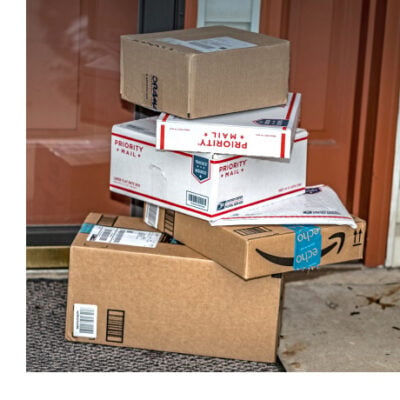April 21st, 2020
While we continue to wait out the coronavirus pandemic, consumer behaviors have already changed in ways that will have lasting implications for all of us. Let’s take a look at how six recent trends in the commercial world will continue to affect nonprofits long after COVID-19 has passed:
1. Double Down on Your Trusted Brand Empty shelves at the grocery store reinforce the idea that in times of crisis, people stick to brands they trust. It’s amazing how quickly new product launches were cancelled or postponed as people gravitated towards proven brands and trusted messages. While it’s important to acknowledge COVID-19 in your communications to make timely and relevant messaging, make sure your nonprofit is also reinforcing your mission, expertise, and impact. Hospitals sending reassuring messages of “we have trained for situations like this” and organizations reinforcing successes they have had solidify your cause as one worthy of donor dollars in this challenging time.
2. DIY Is Here to Stay While American ingenuity has come to the forefront as manufacturing goliaths shift automobile production to ventilators and distilleries from alcohol to hand sanitizer, we now have a new realization and appreciation for getting back to the basics. Whether cooking a meal with ingredients you have on hand, tackling a home improvement project, or learning how to sew your own facemask, the DIY attitude is a rallying cry for the greater good. Nonprofits should leverage this sentiment in their messages—be sure to emphasize simple, effective, and scalable solutions you’ve implemented. Whether it’s touting your financial efficiency, creative solutions to seemingly insurmountable problems, or your nimbleness and resourcefulness during this crisis, the bootstrap mentality will continue to resonate long after COVID-19 has disappeared.
3. Increased Digital Comfortability Working from home, social distancing, and personal health concerns have forced all of us into the digital world, even older demographics who have been previously resistant. Recent reports indicate that nearly 40% of current online grocery shoppers made their first online purchase in March, and videoconferencing app downloads are at an all-time high. In short, historical comfort barriers have fallen nearly overnight, opening the door for expanding digital communications to new audiences. While your website has always been the doorstep to your mission, now is the time to make sure it is mobile-optimized. Information should be easy to find and updated with current language on how your organization is making an impact. Be sure to review your donation page to minimize any donation barriers.
While it may seem like everything around us is swirling with change, one thing remains the same both now and after COVID-19: the right message to the right audience at the right time will succeed.
4. “What day is it” Upending Traditional Best Practices Come on, we’ve all been a product of waking up feeling like it’s Groundhog Day—which is causing seismic shifts in established email protocols. Recent research over the past few weeks indicates drastic shifts in email benchmarks:
-
- Inbox activity is up +20% since people are sitting in front of their computers.
- Peak email open windows have shifted from the 8-10AM hours to 2-4PM. The rush to wrap up the day before picking up the kids or beating traffic has evaporated and instead reflects the end of the new ‘school day’.
- Webinar participation is up 30% for start times after 3PM—consider this for any in-person events that your nonprofit has had to shift to virtual.
- Proven commercial retailers are sending emails at 8PM now; Audubon Society recently reported a 50% open rate on a previously dreaded “Saturday send”. This is not coincidence, but rather a reflection of the realities of being constantly plugged in.
It usually takes around 10 weeks for a new consumer habit to form, so while it’s still a little too early to tell if these digital trends will last, there has been a fundamental shift in the blending of our work/life arrangements that may be a part of our “new normal.” Consider retesting long-standing best practices to align with current realities.
5. USPS = Now More Than Ever! Never have we felt so connected yet so distant, and a newfound appreciation has emerged for healthcare workers, teachers, and our delivery drivers who are keeping our country functioning. If you haven’t read the Alliance of Nonprofit Mailer’s report on the current state of the USPS, I urge you to do so. The stalemate between the USPS and the government has been pulled to the forefront of the public mind during this crisis. Could this ultimately spell the end of the government’s self-funded mandate? While the government runs the census in an election year, the fact that 20% of our country can only receive deliveries from the USPS—that’s 65 MILLION people—reinforces the vital role it serves in delivering our needs six days each week.
6. Is Safety Bigger Than Privacy? As we increasingly defer to government and medical leadership to stay safe, we still yearn to cling to our individuality, even if it means relinquishing some of our privacy. The increased reliance upon Facebook and Google—companies that have received recent negative press for privacy issues—may show an emerging shift in consumer attitudes toward data privacy. As tech companies and the government team up to trace the spread of coronavirus for public safety, people are increasingly willing to trade their freedom for safety. This may have some longer-term implications for the data privacy pendulum to swing back towards a middle ground—a balance between marketers and consumers, who both want relevant ads to relevant audiences.
While it may seem like everything around us is swirling with change, one thing remains the same both now and after COVID-19: the right message to the right audience at the right time will succeed.
-
Blog written by Scott Bell | Vice President of Client Services

